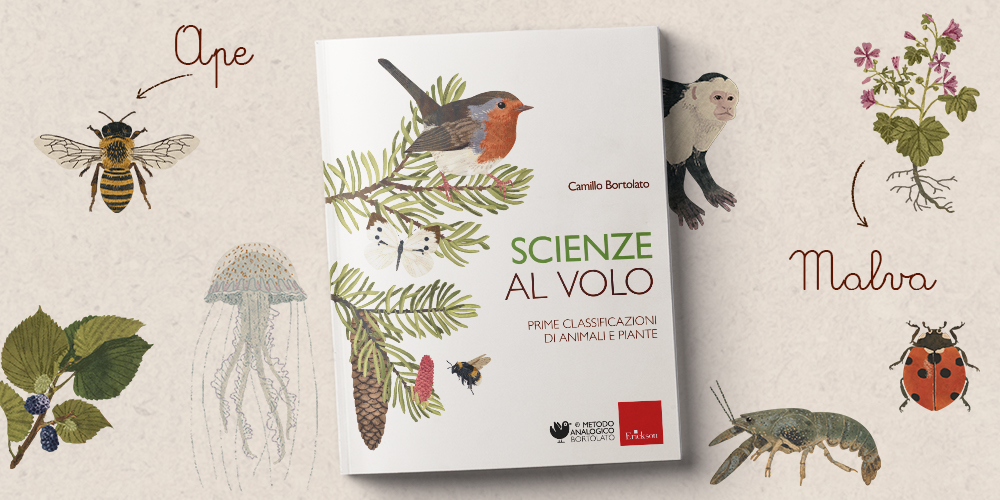 EN
EN
 PT
PT

First classifications of animals and plants

A tool for exploring the classification of animals and plants, reorganizing the knowledge that children already have.
Science on the fly allows you to experience managing complexity without getting lost, in a very short time, by playing with taxonomy.
So here is a ladybug that belongs to the beetle family, which belongs to the insects, which in turn are part of the arthropods, which belong to the invertebrates … and so on.
The richness of the images and the clarity of the overall picture stimulates the interest and curiosity of children. In addition, the attached cards – which show the animal or plant and its classification on the back – allow them to consolidate what has been discovered. Like in a game, you can also do it with your classmates.
HOW TO USE THE BOOK
Science on the fly is a tool to leaf through from beginning to end in the span of 30 minutes (more or less).
Leaf through some pages of the book which have been translated into English to facilitate your evaluation of the product:
THE AUTHOR
Camillo Bortolato is a teacher and pedagogist, the author of tools and materials on the Analogical Method published by Erickson Editions.